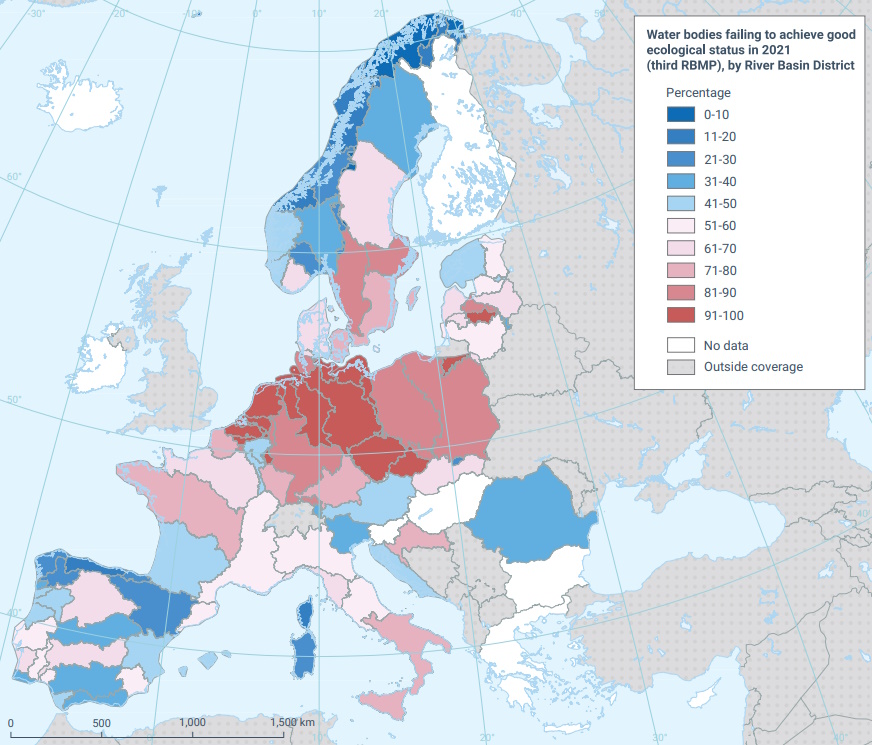
Photo: Joshua Choate from Pixabay
Only 37% of Europe’s surface water bodies have a good or high ecological status, a measure of aquatic ecosystem health under the EU’s Water Framework Directive, while just 29% was ranked good in the 2015-2021 period, according to the largest assessment on the health of Europe’s water bodies.
‘Europe’s state of water 2024: the need for improved water resilience’ demonstrates that Europe is not on track to meet its targets to improve the health of waters under EU rules, the European Environment Agency (EEA) said.
Pollution, habitat degradation, impacts of climate change, and the overuse of freshwater resources are putting pressure on Europe’s lakes, rivers, coastal waters and groundwaters like never before, the report underlines.
According to the document, Europe’s groundwaters fare better than surface waters, with 77% being in good chemical status and in terms of supply. At the same time, 91% of groundwaters are in a good quantitative status. But issues remain in terms of pollution by pesticides and nutrients. EEA warned that groundwater is a key source of drinking water, and necessary for the environment, agriculture and industry.

The deadline set by the EU’s Water Framework Directive (WFD) for all surface and groundwaters to reach a good status was 2015, or until 2027 for cases with grounds for exemption. According to the EEA, the goal won’t be met given the current rate of progress.
EEA Executive Director Leena Ylä-Mononen stressed that the health of Europe’s waters is not good. “Our waters face an unprecedented set of challenges that threatens Europe’s water security. We need to redouble our efforts to restore the health of our valued rivers, lakes, coastal waters, and other water bodies and to make sure this vital resource is resilient and secure for generations to come,” she stated.
Agriculture is by far the highest net water consumer in Europe
Agriculture is the most significant pressure impacting both surface and groundwaters, the report adds.
It results from water use and pollution from the intensive use of nutrients and pesticides, according to member states’ own monitoring. Agriculture is by far the highest net water consumer in Europe and, without changes in practices, demand from irrigated agriculture is likely to increase with climate change.
The EEA’s report shows that, despite some progress, Europe’s waters and aquatic ecosystems are still severely impacted by chemicals, predominantly by air pollution from coal-powered energy generation and diffuse pollution by nutrients and pesticides from agriculture. Habitat degradation is also widespread.
Adding to the challenge of protecting aquatic ecosystems is climate change, which is disrupting weather patterns and further increasing pressures on water resources and management, the analysis reads.


















Be the first one to comment on this article.